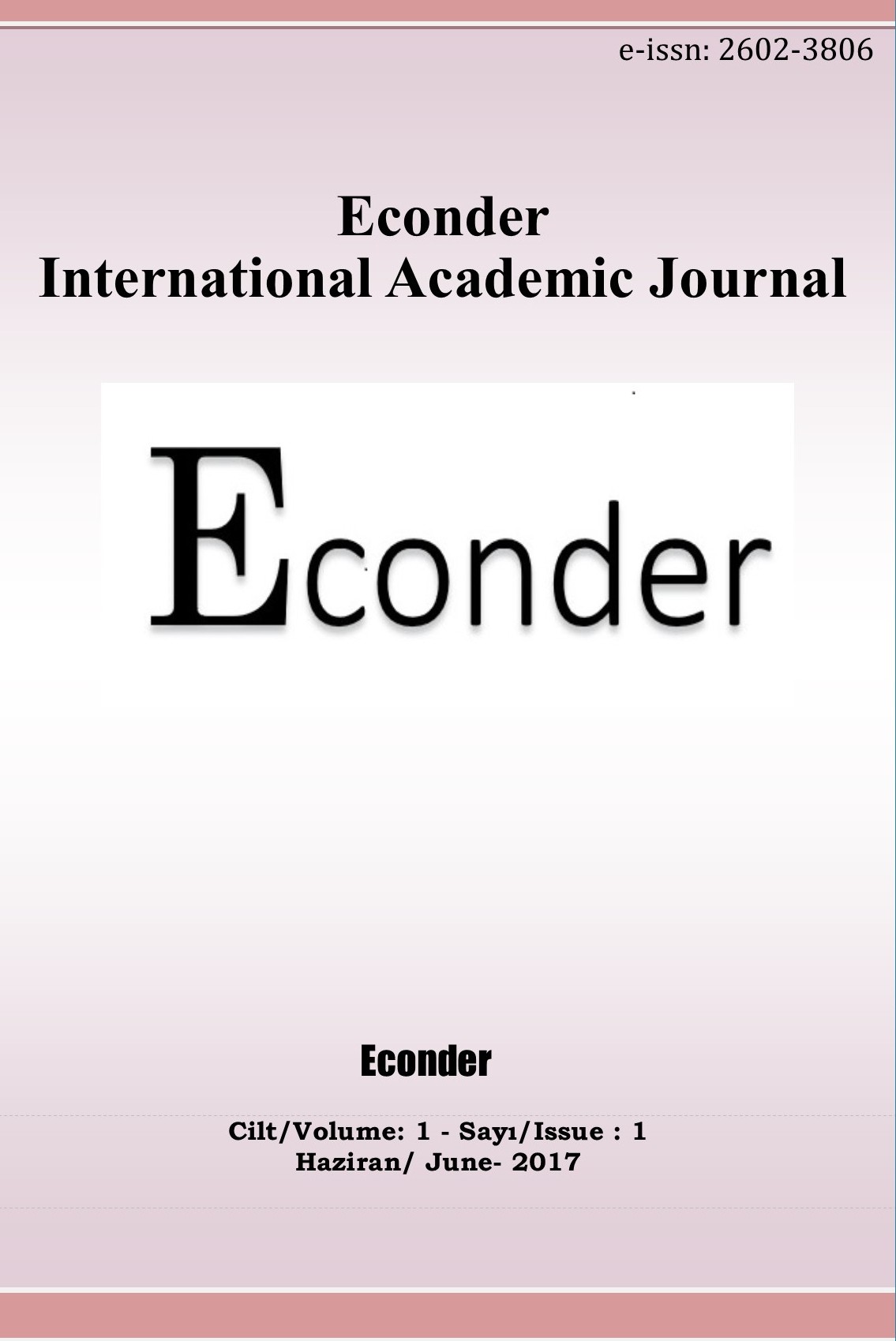Teknolojik Açığın Ülke-Spesifik Etkilerinin Belirlenmesi
Teknolojik açık, Yenilik, Panel Koentegrasyon, Avrupa Birliği, Büyüme
Determination of Country-Specific Effects of Technological Gap
Innovation, Technological Gap, Panel Cointegration, European Union, Growth,
___
- Blomstrom, M. (1989). Foreign investment and spillovers: A study of technology transfer to Mexico. Routledge, London.
- Castellacci, F. (2011). Closing the technology gap? Norwegian Institute of International Affairs Working Paper, 777.
- Encaoua, D. (2007). The European technology gap. Paris School of Economics, Centre Economie Sorbonne, Lecture Monte Verita Conference.
- Fagerberg, J. ve B. Verspagen (2002). Technology-gaps, innovation-diffusion and transformation: an evolutionary approach. Research Policy, 31, 1291-1304.
- Fagerberg, J. (1987). A technology gap approach to why growth rates differ. Research Policy, 16 (2-4), 87-99.
- Fagerberg, J. (1994). Technology and international differences in growth rates. Journal of Economic Literature, 32(3), 1147-1175.
- Heitger B. (1993), Comparative economic growth: Catching up in East Asia. ASEAN Economic Bulletin, 10(1), 68-82.
- Pesaran, M. H. (2004). General diagnostic tests for cross section dependence in panels. IZA Discussion Paper, 1240, 1-39.
- Pesaran, M. H. (2006). Estimation and inference in large heterogeneous panels with a multifactor error structure. Econometrica, 74(4), 967-1012.
- Pesaran, M. H. ve Yamagata, T. (2008). Testing slope homogeneity in large panels. Journal of Econometrics, 142, 50-93.
- Posner, M.V. (1961). International trade and technological change. Oxford Economic Papers, 13: 323-341.
- Schumpeter, J. (1934). The theory of economic development. Harvard University Press, Cambridge M.A.
- Solow, R. (1957). Technical change and the aggregate production function. Review of Economic Statistics. 39(3), 312-320.
- Westerlund, J. (2008). Panel cointegration tests of the Fisher Effect. Journal of Applied Econometrics, 23, 193-233.
- Williams B. R. (1968). Technology, investment and growth. Review by: Stephen Merrett. The Economic Journal, 78(310), 428-430.
- Yayın Aralığı: Yılda 2 Sayı
- Başlangıç: 2017
- Yayıncı: Hayrettin KESGİNGÖZ
Dışsal Giriş Engelleri Firmaları Daha Az Rekabetçi mi Yapıyor? İnebolu’da Bir Alan Çalışması
Serkan DİLEK, Ali KONAK, Hayrettin KESGİNGÖZ, Havva ÖZDEMİR
Türkiye’de Cari İşlemler Açığın Nedenleri ve Cari İşlemler Açığı - Dış Ticaret Açığı İlişkisi
Rukiye ÖZKAN, Oya ÖNALAN, Abdullah KARAKAYA
Akademisyenlerin Değişim Yönetimine Karşı Tutumu: Bir Yüksekokul Örneği
Ümmet AYDAN, Abdullah KARAKAYA
Fatma Zehra TAN, Şenol ÇEKİNMEZ, Mustafa Eren EROL
Ahmet Davutoğlu Dönemi Türk Dış Politikası
Burçin Hafize TARCAN, Hilal AKGÜLLER, Kübra IŞIK
Teknolojik Açığın Ülke-Spesifik Etkilerinin Belirlenmesi
Geçmişten Günümüze İpek Yolu Hakkında Genel Bir Değerlendirme
Abdulkadir ATAR, Halil ŞAHİN, Tuba ÇAVUŞOĞLU
Türkiye’de Kadının İşgücüne Katılmadaki Yeri ve Uluslararası İstihdam Çabaları
Stratejik Kalıcılık: Asya-Pasifik Ekseninde ABD’nin Menbiç Politikası
